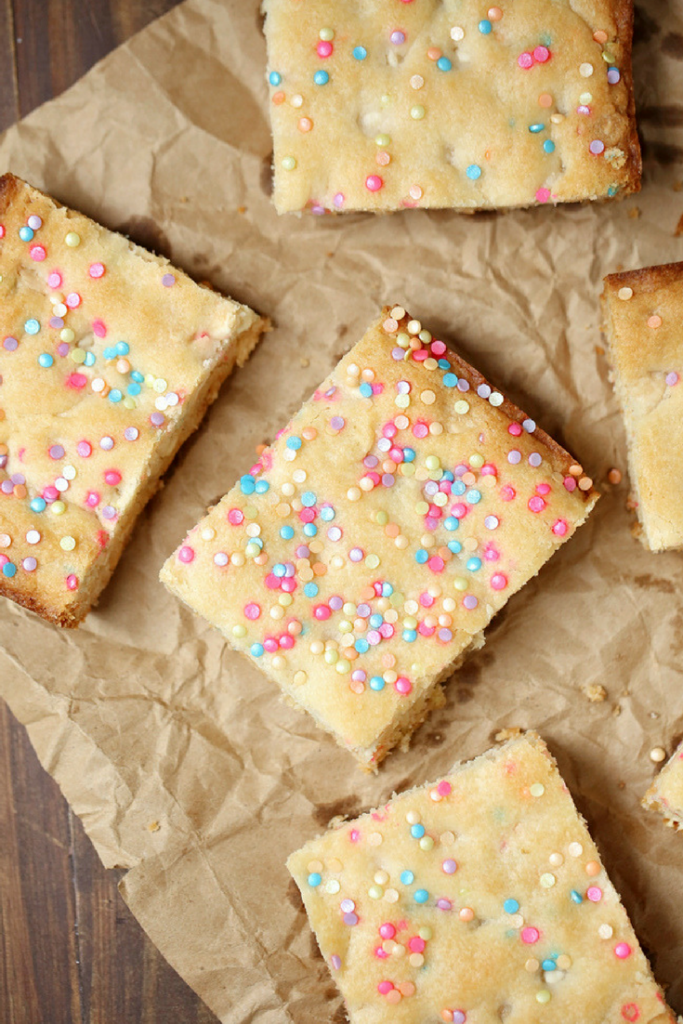Attention all chocolate lovers! Are you ready to embark on a delectable journey that will unravel the mysteries of the sweetest dilemma? Brace yourselves as we delve into the battle of the bars – the ultimate showdown between two titans of indulgence: dark chocolate vs. milk chocolate.
In this article, we will decode the Delicious Dilemma, exploring the intricate flavors, health benefits, and mouthwatering recipes that revolve around these irresistible treats. When it comes to chocolate, everyone has their preferences. Some crave the velvety smoothness of milk chocolate, while others revel in the bold intensity of dark chocolate.
But have you ever wondered which one is truly superior? Prepare to have your taste buds tantalized and your assumptions shattered as we uncover the secrets behind the milk chocolate vs dark chocolate debate.
But wait, before we plunge into the depths of this cocoa-infused rivalry, let’s take a moment to understand the context. We’ll explore the myriad of health benefits associated with dark chocolate, from its antioxidant-rich properties to its potential to boost brain function and reduce the risk of heart disease.
On the other hand, we’ll also shed light on the charm of milk chocolate, with its creamy texture and nostalgic flavors that evoke childhood memories. So whether you find yourself reaching for a velvety milk chocolate bar or savoring the bittersweet notes of dark chocolate, this article will arm you with the knowledge to make an informed choice.
Get ready to tantalize your taste buds, discover sumptuous recipes like dark chocolate-dipped cherries, and uncover the best retailers to satisfy your chocolate cravings. Join us on this delectable adventure as we decipher the Delicious Dilemma: Dark Chocolate vs Milk Chocolate Showdown.
A Taste Test: Flavor Profiles of Dark and Milk Chocolate
When it comes to chocolate, flavor is king. The taste of chocolate can vary greatly depending on the type and percentage of cocoa used, as well as the addition of other ingredients like sugar and milk. Let’s take a closer look at the flavor profiles of dark and milk chocolate to understand what sets them apart.
Dark chocolate is known for its rich, intense flavor. It has a higher percentage of cocoa solids, which gives it a more pronounced bitterness. The bitterness is often balanced by subtle notes of fruitiness or earthiness, depending on the origin of the cocoa beans. Dark chocolate lovers appreciate its complex flavors and enjoy savoring each bite.
Milk chocolate, on the other hand, is sweeter and creamier in taste. It contains a lower percentage of cocoa solids and a higher proportion of milk powder or condensed milk. This results in a smoother texture and a milder flavor compared to dark chocolate. Milk chocolate is often described as having hints of caramel or vanilla, which add to its indulgent appeal.
Deciding between dark and milk chocolate ultimately comes down to personal preference. If you enjoy bold flavors with a touch of bitterness, dark chocolate might be your go-to choice. On the other hand, if you prefer a sweeter and creamier taste experience, milk chocolate will satisfy your cravings.
Decoding the Chocolate Making Process
The journey from cocoa bean to delectable chocolate bar involves several steps that contribute to its unique flavor and texture. Let’s decode the process behind making both dark and milk chocolate.
The first step in making chocolate is harvesting ripe cocoa pods from cacao trees. The pods are cracked open to reveal cocoa beans surrounded by sweet pulp. These beans are then fermented for several days to develop their flavor. After fermentation, the beans are dried and roasted to bring out their characteristic taste.
Once the beans are roasted, they are ground into a paste called chocolate liquor. This paste is then pressed to separate the cocoa solids from the cocoa butter. Dark chocolate is made by combining cocoa solids, cocoa butter, and sugar in varying proportions. The mixture is conched, a process that involves grinding and kneading to refine the texture and flavor of the chocolate.
Milk chocolate follows a similar process, but with the addition of milk powder or condensed milk. The milk components give milk chocolate its creamy texture and sweeter taste.
Understanding the chocolate making process allows us to appreciate the craftsmanship that goes into creating these delectable treats. Whether it’s dark or milk chocolate, each bar is a result of careful selection of ingredients and meticulous processing.
My Chocolate Factory Tour In Switzerland
A few years back, I traveled to Switzerland on vacation. While there, I wanted to be sure to see how the Swiss actually made their fine chocolate. So, I signed up for two different chocolate tours. The first was a street tour where we walked around to several local chocolate shops in Geneva. At each shop, I was given a few samples of chocolate delights. In one shop, they made us the most wonderful cup of hot chocolate I have ever tasted.
This hot chocolate was nothing like I’ve had in the States. It was not like a wet liquid of water or milk mixed with a sweet, chocolate powder. No, it was nothing like that. Instead, it was as if you had melted a chocolate bar and were drinking just that. The chocolate was thick and rich, with just enough liquid to make it pourable. It was heaven!






The second chocolate tour I signed up for was a trip to the Maison Cailler chocolate factory in Broc, Switzerland. Here, I saw them actually making the chocolate. The conveyor belts wes moving, there was a chocolate waterfall and the tour drops off in a huge showroom/store of chocolate to taste and purchase. Definitely watch my video of the waterfall of chocolate.
I spent hours at this wonderful chocolate factory in Broc, Switzerland.
I took about a one hour bus ride from Geneva over to the chocolate factory. We walked all through – which smelled like devine chocolate heaven that I can’t even describe.
My tour then took me into a room where the chocolatiers were actually making chocolate teddy bears. Right in front of me. It was like Willy Wonka and the chocolate factory, but in real life.
Even better…there is a chocolate water fall. I just stared at it for minutes. It was the most amazing chocolate thing I had ever seen.
I had to take a video for you so be sure to watch.
While there, I tasted samples of both dark and milk chocolate. For me, dark chocolate was the winner!!
Dark Chocolate vs. Milk Chocolate: Which is Better for Your Health?
When it comes to health benefits, dark chocolate often takes the spotlight due to its higher cocoa content. Let’s explore why dark chocolate is considered a healthier choice compared to milk chocolate.
Dark chocolate contains higher levels of antioxidants called flavonoids, which have been linked to various health benefits. Flavonoids help reduce inflammation in the body and protect against oxidative stress caused by free radicals. They also have potential cardiovascular benefits by improving blood flow and reducing blood pressure.
In addition to flavonoids, dark chocolate also contains minerals like iron, magnesium, and copper. These minerals play important roles in various bodily functions such as oxygen transport, energy production, and immune system support.
Milk chocolate, on the other hand, contains less cocoa solids and therefore has lower levels of flavonoids compared to dark chocolate. It also tends to have higher sugar content and a higher calorie count due to the addition of milk powder or condensed milk.
While dark chocolate offers potential health benefits, it’s important to consume it in moderation. The high cocoa content can also mean higher levels of caffeine and theobromine, which may affect individuals sensitive to these stimulants.
Ultimately, the choice between dark and milk chocolate for health reasons depends on individual dietary needs and preferences. If you’re looking for a healthier option with potential antioxidant benefits, dark chocolate might be the way to go. However, if you simply want to indulge in a sweet treat without worrying too much about health implications, milk chocolate can still be enjoyed in moderation.
The Best Chocolate Retailers for Every Craving
Now that we’ve explored the flavor profiles and health benefits of dark and milk chocolate, let’s turn our attention to where you can find the best chocolates to satisfy your cravings.
When it comes to dark chocolate, there are several renowned retailers that offer a wide range of options. Artisanal chocolatiers like
If you’re looking for more mainstream options, brands like
Probably my favorite dark chocolate comes from See’s Candies. Their box of dark “Nuts & Chews” is to die for, if you are a dark chocolate lover. My secret is to tell everyone I know that I LOVE See’s Chocolates. This way, I get several boxes a year on my birthday and at the holidays. I freeze the chocolates and pull them out throughout the year to enjoy. They are reeeaaaaallllly good!
For milk chocolate lovers, classic brands like
If you’re in the mood for something a little more indulgent, consider trying gourmet milk chocolates from brands like
See’s Chocolates is also a wonderful contender here. See’s also makes a great box of milk chocolate “Nuts and Chews” in case you were wondering about that.
Whether you prefer dark or milk chocolate, there are plenty of options available to suit your taste. Exploring different brands and flavors can be a delightful adventure in itself, so don’t hesitate to try something new and discover your personal favorites.
Deciphering the Delicious Dilemma: Final Thoughts on Dark vs. Milk Chocolate
The dark chocolate vs milk chocolate debate is one that may never be fully settled. Both types of chocolate have their own unique characteristics and appeal to different taste preferences. Whether you’re a fan of the bold bitterness of dark chocolate or the creamy sweetness of milk chocolate, there’s no denying that both have their place in the world of indulgence.
Dark chocolate offers complex flavors, potential health benefits, and a higher cocoa content that appeals to those who appreciate intensity. On the other hand, milk chocolate provides a smooth and creamy experience with nostalgic flavors that evoke fond memories.
The key is to enjoy both types of chocolate in moderation and savor each bite. Whether you’re treating yourself to a piece of rich dark chocolate or indulging in a velvety milk chocolate bar, remember that these delectable treats are meant to be savored and enjoyed.
Exploring the Antioxidant-Rich Properties of Dark Chocolate
In recent years, dark chocolate has gained attention for its potential health benefits due to its high cocoa content. One of the main reasons behind these health claims is the presence of antioxidants in dark chocolate.
Antioxidants are compounds that help protect the body against damage caused by free radicals, which are unstable molecules that can lead to oxidative stress and contribute to various diseases. Dark chocolate contains a class of antioxidants called flavonoids, which have been shown to have potent antioxidant properties.
Flavonoids in dark chocolate, particularly a type called flavanols, have been associated with several health benefits. Studies have suggested that these compounds may help improve blood flow, reduce inflammation, and lower blood pressure.
One study published in the Journal of the American Heart Association found that consuming dark chocolate with a high cocoa content (70% or more) improved vascular function and reduced blood pressure in healthy individuals. Another study published in the British Journal of Nutrition showed that regular consumption of dark chocolate rich in flavanols improved cognitive function in older adults.
While these studies show promising results, it’s important to note that the health benefits of dark chocolate are dose-dependent. Consuming excessive amounts of chocolate can lead to weight gain and other health issues due to its calorie and sugar content.
To reap the potential antioxidant benefits of dark chocolate, opt for varieties with higher cocoa percentages (70% or more) and enjoy it in moderation as part of a balanced diet. Remember that while dark chocolate may offer some health advantages, it should not be seen as a substitute for other healthy habits like regular exercise and a nutritious diet.
Dark Chocolate: A Potential Brain Booster
In addition to its potential cardiovascular benefits, dark chocolate has also been linked to improved brain function. The flavanols present in dark chocolate may have positive effects on cognitive performance and mood.
A study published in the journal Frontiers in Nutrition found that consuming cocoa flavanols enhanced cognitive performance in tasks related to attention, processing speed, working memory, and verbal fluency. The researchers suggested that the flavanols in dark chocolate may improve blood flow to the brain, leading to these cognitive benefits.
Another study published in the Journal of Psychopharmacology showed that consuming dark chocolate rich in flavanols improved mood and reduced stress levels. Participants who consumed dark chocolate reported feeling more content and calm compared to those who consumed a placebo.
While these studies provide interesting insights into the potential cognitive and mood-enhancing effects of dark chocolate, more research is needed to fully understand the mechanisms behind these benefits. It’s also worth noting that the effects may vary among individuals, and factors like overall diet and lifestyle can influence the outcomes.
If you’re looking for a natural way to give your brain a boost, indulging in a piece of dark chocolate with a high cocoa content might be worth considering. Just remember to enjoy it in moderation as part of a balanced diet.
The Role of Dark Chocolate in Reducing the Risk of Heart Disease
Heart disease is one of the leading causes of death worldwide, but certain dietary choices can help reduce the risk. Dark chocolate has been studied for its potential cardiovascular benefits due to its high cocoa content.
The flavonoids present in dark chocolate have been shown to have positive effects on heart health. These compounds help improve blood flow, reduce inflammation, and lower blood pressure – all factors that contribute to a healthy cardiovascular system.
A meta-analysis published in the journal Heart found that consuming dark chocolate significantly reduced blood pressure levels. The study concluded that regular consumption of dark chocolate could lead to a small but significant reduction in both systolic and diastolic blood pressure.
In addition to its effects on blood pressure, dark chocolate may also have positive impacts on cholesterol levels. A study published in The American Journal of Clinical Nutrition showed that consuming dark chocolate increased levels of high-density lipoprotein (HDL) cholesterol, also known as “good” cholesterol. HDL cholesterol helps remove low-density lipoprotein (LDL) cholesterol, or “bad” cholesterol, from the bloodstream.
While these findings are promising, it’s important to note that the health benefits of dark chocolate are most likely seen when it is consumed in moderation as part of a balanced diet. Dark chocolate should not be seen as a magic bullet for heart health and should be enjoyed alongside other heart-healthy habits like regular exercise and a diet rich in fruits, vegetables, whole grains, and lean proteins.
The Irresistible Charm of Milk Chocolate
Milk chocolate holds a special place in the hearts of many chocolate lovers. Its creamy texture and sweet taste make it an irresistible treat for those with a sweet tooth. But what is it about milk chocolate that makes it so appealing?
One reason for milk chocolate’s charm lies in its composition. Milk chocolate contains milk powder or condensed milk, which gives it its characteristic creaminess. The addition of milk also helps balance out the bitterness of cocoa solids, resulting in a smoother and milder flavor compared to dark chocolate.
Milk chocolate often evokes feelings of nostalgia and comfort. Many people have fond memories associated with childhood treats like milk chocolate bars or candy-coated chocolates. The familiar taste and texture can provide a sense of familiarity and happiness.
In addition to its taste appeal, milk chocolate is incredibly versatile when it comes to culinary creations. It can be melted down into silky ganache for truffles or used as a coating for fruits and nuts. The creamy nature of milk chocolate also pairs well with flavors like caramel, peanut butter, or hazelnut.
Whether you enjoy milk chocolate on its own or use it as an ingredient in your favorite desserts, there’s no denying its charm. Its smooth and sweet nature makes it a crowd-pleaser for chocolate lovers of all ages.
Nostalgic Flavors: Unpacking the Appeal of Milk Chocolate
There’s something undeniably nostalgic about the taste of milk chocolate. For many, it brings back memories of childhood treats and carefree moments. But what is it about milk chocolate that evokes such strong emotions?
One reason for milk chocolate’s nostalgic appeal lies in its sweetness. The addition of milk powder or condensed milk gives it a creamy and indulgent flavor that can transport us back to simpler times. Whether it’s biting into a milk chocolate bar or savoring a piece of candy-coated chocolate, the taste can evoke feelings of comfort and happiness.
Milk chocolate also often reminds us of special occasions and celebrations. From Easter eggs to holiday stockings, milk chocolate has long been associated with festive treats. The act of unwrapping a foil-wrapped milk chocolate bar or sharing a box of assorted chocolates can bring back memories of joyous moments spent with loved ones.
The versatility of milk chocolate also adds to its appeal. It can be enjoyed on its own, used as a topping for ice cream or baked goods, or melted down into hot cocoa. Its smooth texture and sweet flavor make it a versatile ingredient that can be incorporated into various recipes.
Whether you’re indulging in a childhood favorite or discovering the joy of milk chocolate for the first time, there’s no denying its nostalgic charm. It’s a reminder that sometimes the simplest pleasures are the most delightful.
Indulgent Recipes: Dark Chocolate-Dipped Cherries and More
If you’re looking to take your love for dark and milk chocolate to the next level, why not try your hand at some indulgent recipes? From dark chocolate-dipped cherries to milk chocolate truffles, there are plenty of ways to satisfy your sweet tooth.
Dark chocolate-dipped cherries are a classic treat that combines the tartness of cherries with the rich bitterness of dark chocolate. Simply melt some dark chocolate in a double boiler, dip fresh cherries into the melted chocolate, and let them cool on a parchment-lined baking sheet. The result is a decadent bite-sized treat that pairs perfectly with a glass of red wine.
If you’re a fan of milk chocolate, try making homemade milk chocolate truffles. Start by melting milk chocolate and heavy cream together until smooth. Let the mixture cool and then roll it into small balls. Coat the truffles in cocoa powder or crushed nuts for added texture and flavor. These melt-in-your-mouth treats are perfect for gifting or enjoying as an indulgent snack.
For those who enjoy the combination of dark and milk chocolate, consider making marbled bark. Melt equal parts dark and milk chocolate separately, then pour them onto a parchment-lined baking sheet in alternating stripes. Use a toothpick or skewer to swirl the two chocolates together to create a marbled effect. Sprinkle with your favorite toppings like chopped nuts or dried fruit before letting it set in the refrigerator.
These recipes are just a starting point – feel free to get creative and experiment with different flavors and ingredients. Whether you’re making treats for yourself or sharing them with loved ones, these indulgent recipes will surely satisfy any craving.
Where to Find the Best Dark Chocolate and Milk Chocolate
If you’re ready to embark on a journey to find the best dark and milk chocolates out there, look no further than these top retailers:
These retailers can be found online or at specialty stores near you. Whether you’re looking to indulge yourself or find the perfect gift for a fellow chocolate lover, these brands are sure to satisfy your cravings.
Making an Informed Choice: Which Chocolate is Right for You?
The decision between dark and milk chocolate ultimately comes down to personal preference. Both types of chocolate offer unique flavors and characteristics that cater to different taste buds. Here are a few factors to consider when making your choice:
Taste: Do you prefer the bold and intense flavors of dark chocolate, or do you gravitate towards the creamy sweetness of milk chocolate? Consider your taste preferences and what brings you the most enjoyment.
Health considerations: If you’re looking for potential health benefits, dark chocolate may be the better choice due to its higher cocoa content and antioxidant properties. However, it’s important to consume it in moderation as part of a balanced diet.
Texture: Dark chocolate tends to have a firmer texture and a more pronounced snap when broken, while milk chocolate has a smoother and creamier mouthfeel. Think about which texture appeals to you more.
Occasion: Consider the context in which you’ll be enjoying your chocolate. Are you looking for an everyday treat or something special for a celebration? Both dark and milk chocolates have their place in various occasions.
Ultimately, there’s no right or wrong answer when it comes to choosing between dark and milk chocolate. The key is to savor each bite and enjoy the experience of indulging in these delightful treats.
Health Benefits of Dark Chocolate: Antioxidant Powerhouse and More
In recent years, dark chocolate has gained recognition for its potential health benefits. Let’s take a closer look at why dark chocolate is often hailed as an antioxidant powerhouse:
Antioxidants are compounds that help protect cells from damage caused by free radicals. Dark chocolate contains flavonoids, a type of antioxidant that has been shown to have various health benefits.
The flavonoids in dark chocolate have been linked to improved heart health by reducing inflammation, improving blood flow, and lowering blood pressure. They may also help reduce LDL cholesterol levels (the “bad” cholesterol) while increasing HDL cholesterol levels (the “good” cholesterol).
Dark chocolate’s antioxidant properties may also have positive effects on brain health. Studies have suggested that the flavonoids in dark chocolate can improve cognitive function, enhance mood, and even protect against age-related cognitive decline.
In addition to its antioxidant content, dark chocolate is also a good source of minerals like iron, magnesium, and copper. These minerals play important roles in various bodily functions, including energy production and immune system support.
While dark chocolate offers potential health benefits, it’s important to consume it in moderation. Dark chocolate is still high in calories and fat, so it should be enjoyed as part of a balanced diet.
Taste Test: Flavor Profile Comparison
If you’re still undecided between dark and milk chocolate, why not conduct a taste test to compare their flavor profiles? Here’s how you can do it:
Start by selecting a few different brands of dark and milk chocolates with varying cocoa percentages. It’s best to choose bars that are similar in terms of cocoa content for an accurate comparison.
Begin with the dark chocolates. Take a small piece and let it melt on your tongue. Pay attention to the initial flavors that hit your palate – is it bitter or fruity? Notice any lingering notes or aftertastes.
Next, move on to the milk chocolates. Again, let a small piece melt on your tongue and observe the flavors. Compare the sweetness level with that of the dark chocolates. Notice any differences in texture or mouthfeel.
Take notes as you go along to remember your impressions of each chocolate. Consider factors like bitterness/sweetness balance, intensity of flavor, creaminess/smoothness, and overall enjoyment.
After tasting several samples of both types of chocolate, reflect on your preferences. Did you find yourself leaning towards one over the other? Which flavors and textures resonated with you the most?
Remember, taste is subjective, and what appeals to one person may not necessarily appeal to another. The purpose of this taste test is to help you discover your personal preferences and make an informed choice.
Decoding the Psychological Effects: Mood Boosting and Stress Relief
Chocolate has long been associated with feelings of happiness and indulgence. But is there any truth behind these claims? Let’s explore the psychological effects of dark and milk chocolate:
Dark chocolate contains compounds that can have mood-boosting effects. One such compound is phenylethylamine (PEA), which stimulates the release of endorphins – chemicals in the brain that promote feelings of pleasure and well-being.
The presence of serotonin in dark chocolate also contributes to its mood-enhancing properties. Serotonin is a neurotransmitter that helps regulate mood, sleep, and appetite. Consuming dark chocolate may increase serotonin levels in the brain, leading to a sense of calmness and contentment.
Milk chocolate, with its creamy texture and sweet taste, can also elicit positive emotions. The act of indulging in a piece of milk chocolate can trigger feelings of comfort and nostalgia, which can help reduce stress levels.
While these psychological effects are not exclusive to dark or milk chocolate, they contribute to the overall enjoyment and satisfaction we experience when consuming these treats.
The Science Behind the Sweetness: Cocoa Content and Sugar Levels
The sweetness level of chocolate depends on two main factors: cocoa content and sugar levels. Let’s take a closer look at how these elements influence the taste profile:
Cocoa content refers to the percentage of cocoa solids present in the chocolate. Dark chocolate typically has a higher cocoa content compared to milk chocolate. The higher the cocoa content, the more intense and bitter the flavor of the chocolate.
Sugar levels, on the other hand, contribute to the sweetness of chocolate. Milk chocolate contains a higher proportion of sugar compared to dark chocolate. The added sugar helps balance out the bitterness of cocoa solids and gives milk chocolate its characteristic sweetness.
The ratio of cocoa content to sugar levels determines the overall taste profile of each type of chocolate. Dark chocolate with a high cocoa content will have a more pronounced bitterness, while milk chocolate with its higher sugar content will be sweeter and creamier.
When choosing between dark and milk chocolates, consider your preference for sweetness and bitterness. If you enjoy bold flavors with a touch of bitterness, opt for dark chocolate with a higher cocoa percentage. If you prefer a sweeter and milder taste experience, milk chocolate will be more to your liking.



















Leave a Reply